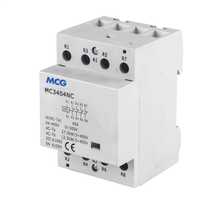Good evening,
This isn't technically a DIY post as I'm not suggesting I do this work myself, but I'm looking at the idea for a new-build/rewire that I'm due to be progressing...
I have seen (albeit only once or twice) properties that have essentially installed a second ring main throughout the house usually with green sockets that can be isolated with a single contactor/switch usually sited by the front door.
The the theory is that the sockets on the second ring would be used for things that don't need to be on 24/7 but do consume some standby current. For example, TVs, phone/laptop chargers, games consoles, that type of thing. When you leave home for the day, you flick the switch the the front door and power is cut to all these devices.
I was reminded that I'd seen this idea due to the recent news items around the cost of devices in standby (well over £100/year for the average house) and rising costs of electricity, and it seems like a smart solution. I'm also think it could be easily linked to a burglar alarm to switch automatically on set/unset for example.
However - there are some downsides - the majority of time you're powering a closed contactor which itself will draw current, plus many devices these days while drawing standby power may not like being powered up and down in this way. It's also clearly not something people commonly install (but maybe that's simply because housebuilders don't want to spend £ on the extra cabling).
I'd really welcome anyone's thoughts on the concept!?
This isn't technically a DIY post as I'm not suggesting I do this work myself, but I'm looking at the idea for a new-build/rewire that I'm due to be progressing...
I have seen (albeit only once or twice) properties that have essentially installed a second ring main throughout the house usually with green sockets that can be isolated with a single contactor/switch usually sited by the front door.
The the theory is that the sockets on the second ring would be used for things that don't need to be on 24/7 but do consume some standby current. For example, TVs, phone/laptop chargers, games consoles, that type of thing. When you leave home for the day, you flick the switch the the front door and power is cut to all these devices.
I was reminded that I'd seen this idea due to the recent news items around the cost of devices in standby (well over £100/year for the average house) and rising costs of electricity, and it seems like a smart solution. I'm also think it could be easily linked to a burglar alarm to switch automatically on set/unset for example.
However - there are some downsides - the majority of time you're powering a closed contactor which itself will draw current, plus many devices these days while drawing standby power may not like being powered up and down in this way. It's also clearly not something people commonly install (but maybe that's simply because housebuilders don't want to spend £ on the extra cabling).
I'd really welcome anyone's thoughts on the concept!?



